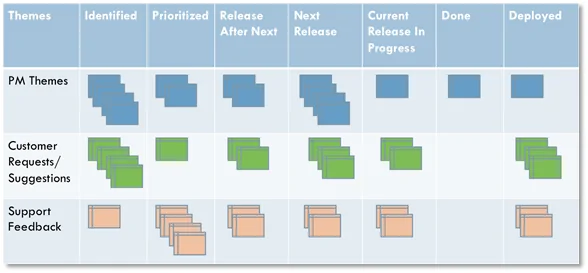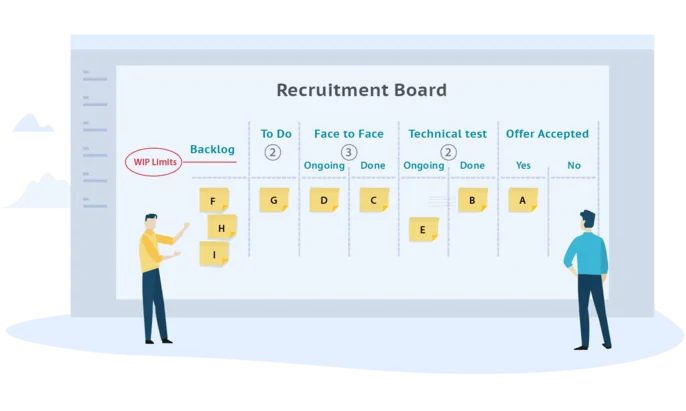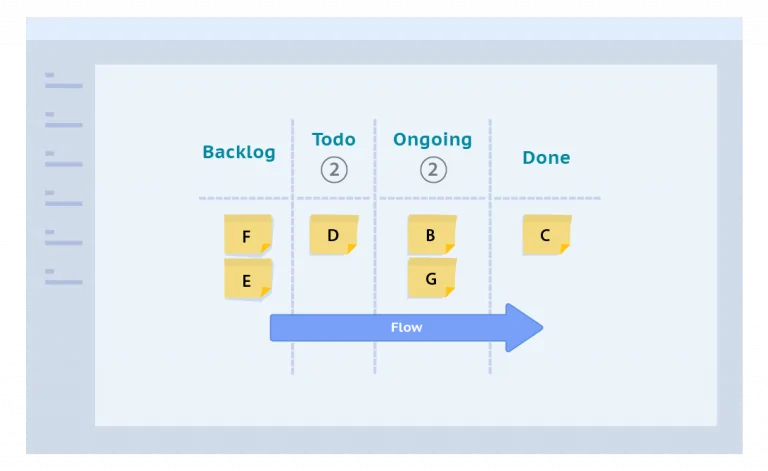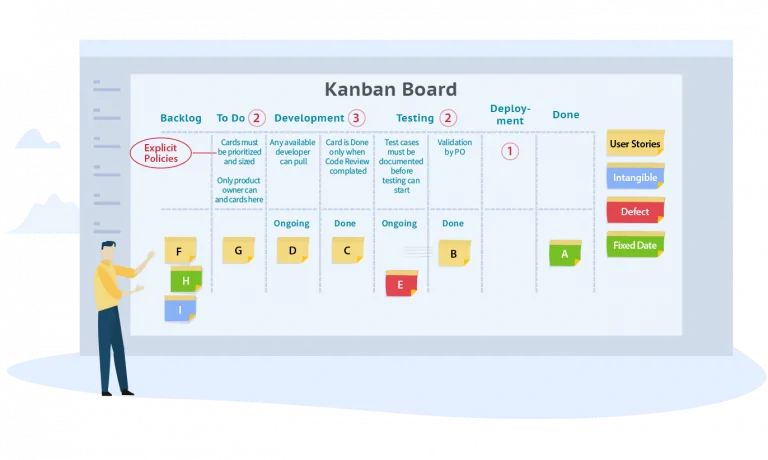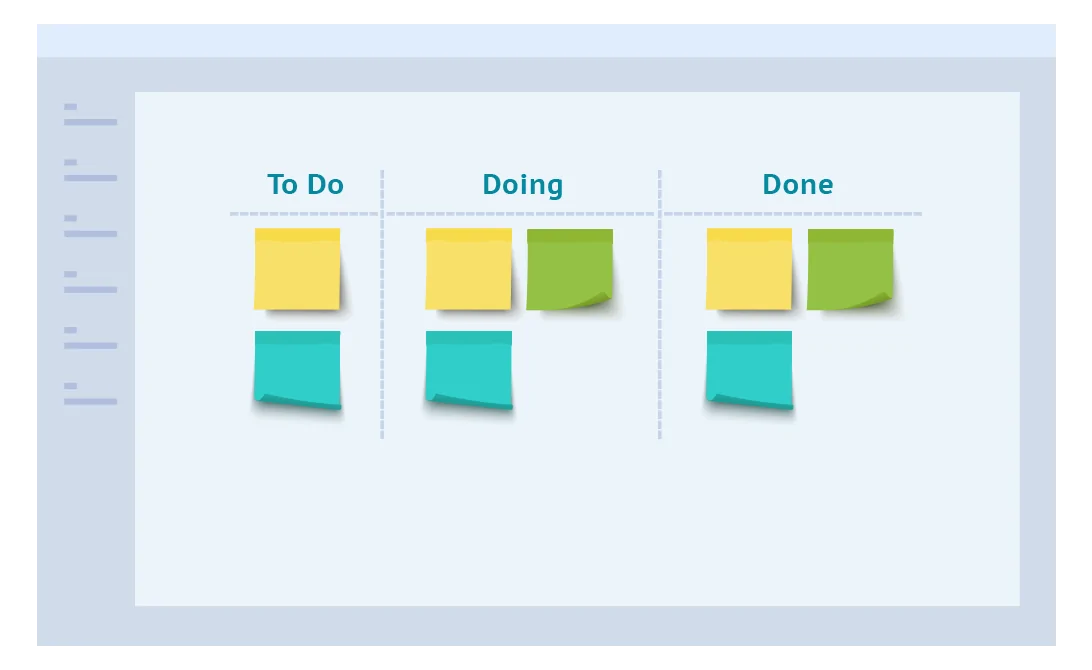Kanban is a visual system for managing work, as it progresses through a process. A good example of Kanban is the way milk delivery was done in the old days: when customers needed more milk, they did not give the milkman a schedule, nor did they use a planning system. They simply put the empty bottles at the entrance and the milkman exchanged them for full ones. That is the essence of a pull system.
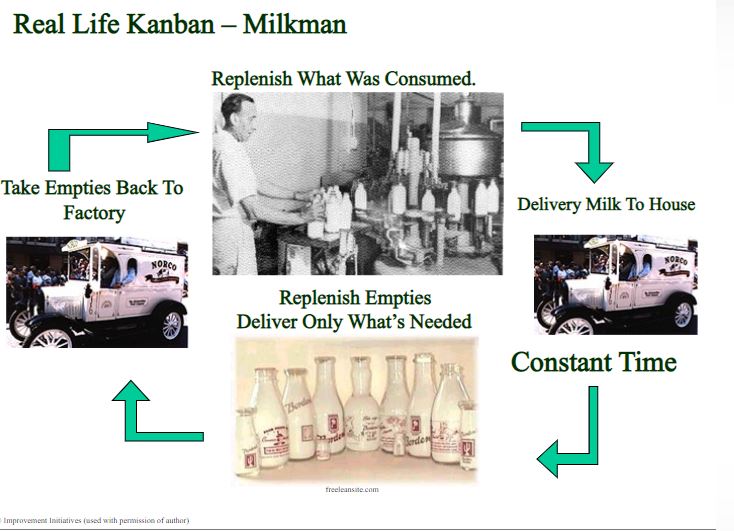 Src: © Improvement Initiatives & Slideplayer
Src: © Improvement Initiatives & Slideplayer
Now, let us see how we can make use of Kanban to manage work/ tasks remotely.
The Challenge of Coordinating Work in a Remote Environment
In the current environment of remote work, some common challenges for knowledge teams have become even more pronounced:
- Tracking who is working on what.
- How to communicate & coordinate effectively?
- How to ensure that productivity remains high/ unaffected?
While working from home has given us more time to work since there is no commute involved, coordinating tasks effectively with other members of the team has become more challenging. We have all faced Zoom fatigue – and the disappearing boundary between work and home.
This has also meant going from collaborating synchronously, meeting in person to discuss tasks and issues, to working asynchronously at different times.
In spite of the various challenges, according to a recent study by Softchoice:
- “74% of workers said they would quit their current jobs to work for an organization offering remote-work options. “
- Of course, “85% of North Americans expect to be provided the technology or tools to work remotely, from home, in coffee shops and other remote locations.”
So, it is very evident that there is a need for organizations to adapt themselves for “The New Normal” in which the traditional way of working in office spaces has given way to the new paradigm of “Remote Working”.
This is where Lean and Agile Methodologies can guide us on how we should go through these changes in our working habits.
Agile in a Remote Work Environment
Agile experts have typically emphasized “small, independent, cross-functional, self-organizing, collocated teams” as the ideal way to implement Agile. The pandemic has upended that – and teams have had no option but to make Agile work in a distributed environment.
Fortunately, the early adopters of Lean/ Agile in most enterprises – the high-tech – IT, software and application development teams – were already used to working in a globally distributed environment. As true Agile pioneers in their organizations, “responding to market changes” has been second nature to them and they have adopted well.
Agile methods encourage frequent inspection and adaptation, which promotes self-organization, constant communication, focus on the customer, greater teamwork and the delivery of value.
Amongst the various tools they use in their Lean/ Agile repertoire, Kanban, in particular, is well-suited for remote/ distributed teams and for many of our customers, has been a powerful enabler for these teams to make Agile work in a distributed environment.
Kanban to the Rescue of Remote Teams and Virtual Business Systems
1. Emphasize on Visualization:
Kanban emphasizes visualization of work for knowledge teams using Kanban method. Without visualization using a Kanban board (or any other medium that suits a team’s context), knowledge work that teams do remains hidden and invisible in people’s computers, emails, and various workflow/ collaboration tools. Kanban helps them visualize this work and thus helps them better understand the status of work and helps with better coordination across the system. In a predominantly distributed environment, this becomes even more important for remote teams to stay in sync with each other.
2. Use of WIP Limits:
One of the biggest challenges to working from home has been the disappearing of boundaries between work and home. People have felt burnout. “Zoom-fatigue” has become a real thing – and people are working longer and harder to get through their work.
The Kanban Method espouses implementation of WIP (Work in Progress) limits to reduce multitasking and overloading of teams, emphasizing the need to finish what one has already taken up before starting something new. This goes a long way to reduce overloading the team and prevent burnout. Especially in these times, when work-home boundaries are disappearing, this aspect of Kanban can be invaluable in helping teams manage their work more effectively, helping them achieve more while doing less at one time!
3. Manage and Improve Flow:
After being suddenly flung into the world of remote/ distributed working, many teams/ organizations have had challenges in terms of keeping their team members’ morale high and keeping productivity levels up. In this situation, helping teams get a sense of achievement or accomplishment by getting things done is a huge psychological advantage. Kanban helps teams focus on improving their flow by eliminating blockers and and impediments to their workflow and can help individual team members feel connected to the overall team and organization.
4. Make Policies Explicit:
As with anything else, a sudden transition to a distributed environment can cause a lot of confusion and doubt, especially in the minds of younger team members who may not be as familiar with their teams’ work processes and policies. In the current environment, new hires have had an especially hard time getting to know everyone on their team, becoming a part of the team’s ceremonies with a sense of ownership and accomplishment, and just getting their own work done. Kanban’s emphasis on making policies explicit can be an invaluable tool to help remote workers quickly come to speed on team and work-related policies and rules, ensuring they get some minimum level of support in learning and getting work done.
5. Implement Feedback Loops:
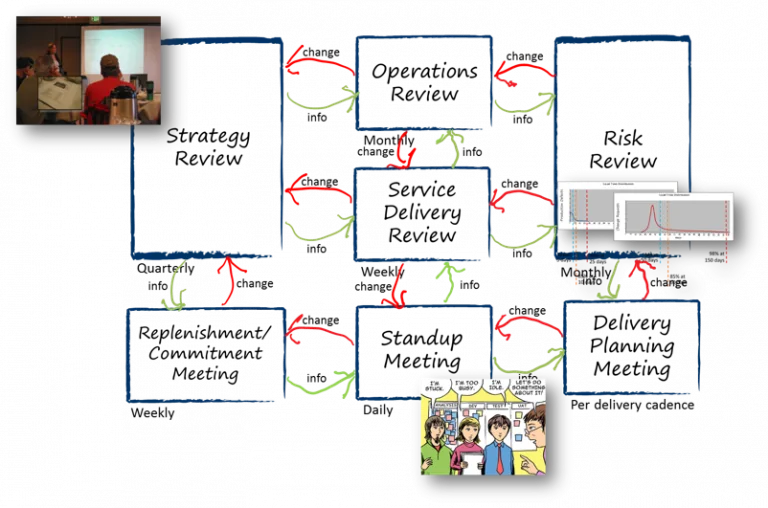
All systems and teams benefit from getting feedback and measuring their performance. Kanban’s focus on measuring workflow data such as lead time, throughput and flow efficiency help teams understand how they are performing and get a common sense of purpose on key metrics where they might need to improve. While this does not directly address the remote work aspect, anything that provides teams an opportunity for meaningful conversations and feedback is always welcome, especially when they might need motivation to get together and talk.
Using a Virtual Kanban Board for Managing Tasks
A Kanban board is a visualization of tasks that help teams see what is in progress and move a project forward. The Kanban board is a tool for mapping and visualizing a workflow. As you surely know, it is one of the key components of the Kanban method. They are very useful for remote team members, since everyone can see the tasks that their colleagues are working on in real time.
The simplest form of Kanban board consists of four columns; Task list (backlog), To-do, In Progress (Doing) and Completed (Done). Tasks progress as the person responsible and the team agree that all the necessary requirements to change status have been met.
On a physical board it is common to use sticky notes, on an electronic one virtual cards are used. Whichever alternative is chosen, the board must contain all the information necessary for each task. Today, as you may know, there are digital Kanban board solutions such as SwiftKanban; which is more practical and accessible as opposed to a physical board. It is ideal for both for teams that work remotely and for those that carry out their activity in the office.
The Work in Progress limit (WIP)
Kanban proposes that each person, team, or stage of the process work only on a limited number of activities. Never take up tasks more than what your “system” can process in a defined period of time.
Limiting the work is essential to be able to implement a pull system, since by limiting the capacity of a process it is possible to know immediately when there is free capacity to take up more tasks and allows the team to focus on ensuring that they are managed as quickly as possible.
Setting limits to the amount of work in progress (WIP) would improve productivity and reduce the number of tasks left in the “Doing” state by forcing the team to focus on a small set of critical activities where a new Card is not pulled until the previous job is completed. It is easier for the team to identify where additional support or time is needed.
A key aspect of Kanban is to reduce the amount of multi-tasking that most teams and knowledge workers are prone to do and instead encourage them to “Stop Starting! And Start Finishing!”, a mantra coined by Dr. Arne Roock.
The importance on task visualization, shared orientation to customer values and outcomes, and an explicit set of policies that control how work moves through the team, makes Kanban a powerful framework for remote teams.
Remote Working – The New Normal
According to Slack, an estimated 16 million U.S. knowledge workers started working remotely due to Covid-19. Microsoft announced that it will let employees work from home permanently. Google and Amazon to keep most of its employees working at home until 2021.
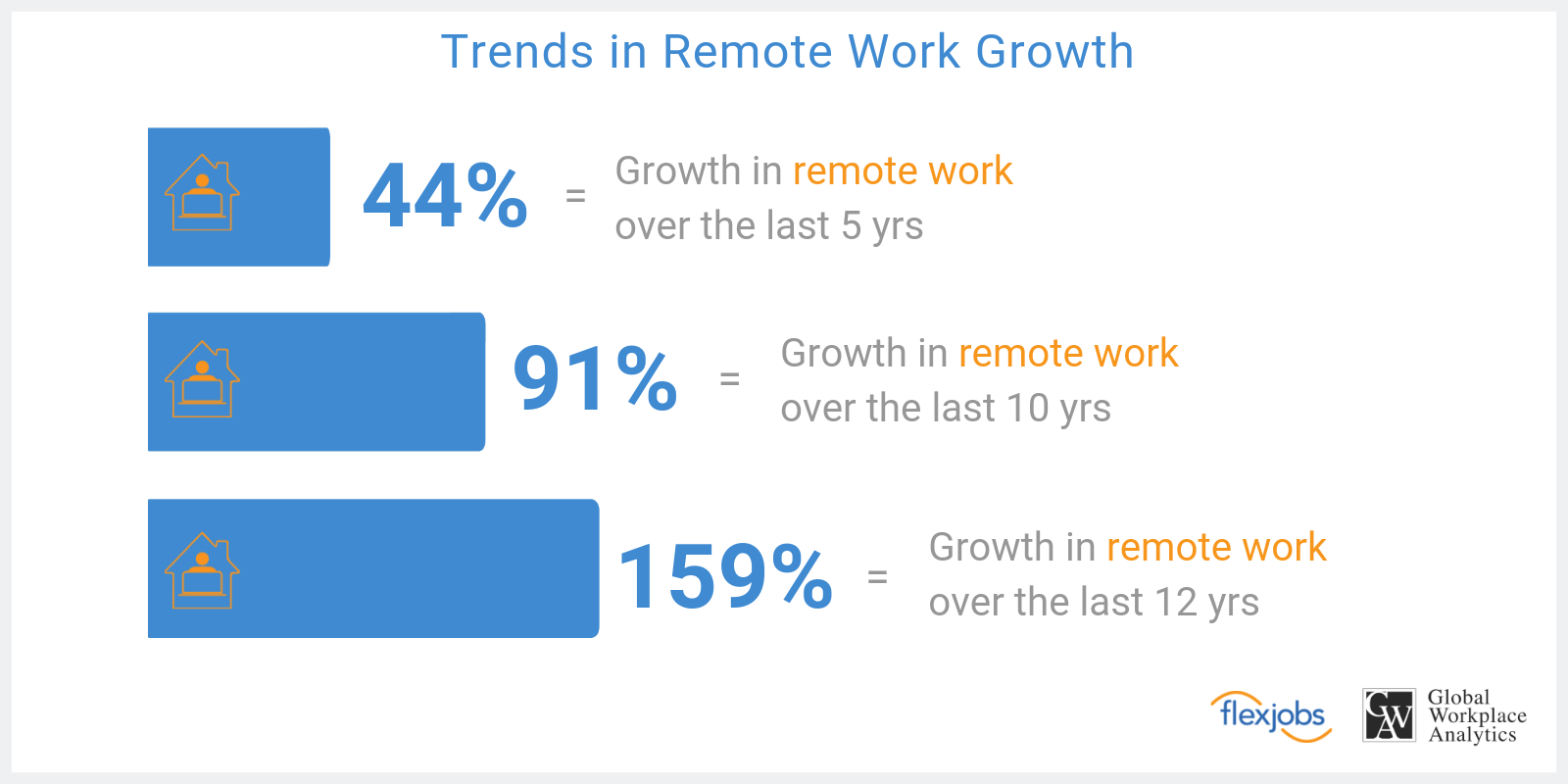
99% of the Staff At TCS, Infosys & Wipro Will Work From Home indefinitely. According to Wipro, the decision to bring back more staff in offices depends on the coronavirus pandemic situation and customer requirements.
It is very evident that the remote working trend is growing and that the current pandemic situation has fuelled this trend exponentially.
Organizations must adapt to this change and tweak the way they work and manage teams moving forward. In this context, the use of Kanban method – and a good Kanban tool, such as SwiftKanban, becomes a significant necessity.
SwiftKanban is a powerful Kanban tool tailored for remote working teams. Signup for a fully-featured FREE Trial and see how it can make a difference in your teams’ productivity.

